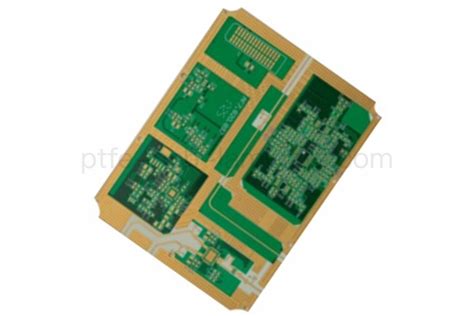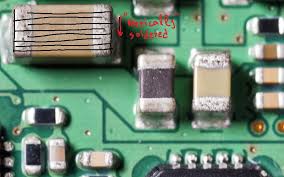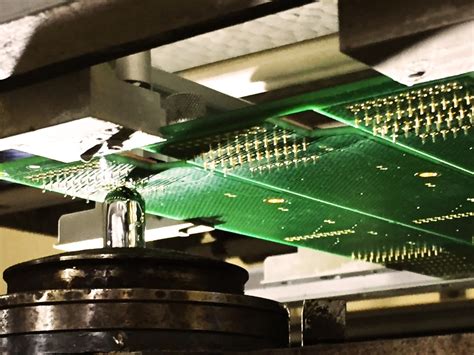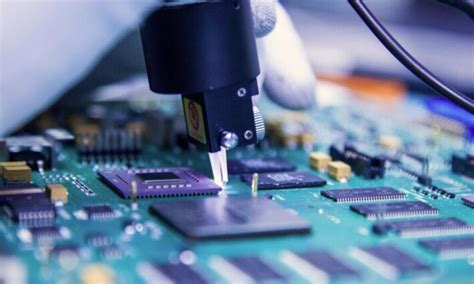Unlocking Innovation: Mastering PCB Circuits for Modern Designs
Key Takeaways
When delving into the complex realm of PCB circuits, it’s essential to grasp the fundamental aspects and innovative techniques that drive successful designs. Understanding the basics of PCB manufacturing is your first step to achieving excellence. Many PCB manufacturing companies now utilize cutting-edge technology to streamline their processes, reducing the overall PCB manufacturing cost while enhancing quality. You should be aware of how these advancements impact your projects, as they can dictate not only performance but also your overall success in a competitive market. Moreover, recognizing the nuances within the PCB manufacturing business can empower you to make informed decisions regarding sourcing and production methods. By leveraging these insights, you can effectively navigate challenges and unlock opportunities in your own designs, positioning yourself at the forefront of technological innovation in the industry.
Understanding the Basics of PCB Circuits
When delving into the realm of PCB circuits, it’s essential to grasp some foundational concepts that will serve as building blocks for your designs. Printed Circuit Boards (PCBs) are crucial for connecting various electronic components in a reliable and efficient manner. Understanding how these circuits function allows you to optimize designs for performance and reliability. One aspect that significantly impacts your project is the PCB manufacturing process itself. Familiarity with the PCB manufacturing cost can aid in budgeting your projects more effectively, ensuring you allocate resources wisely without compromising quality.
As you explore different PCB manufacturing companies, noting their technologies and capabilities becomes vital. Some may specialize in high-volume production, while others might focus on niche markets, influencing turnaround times and overall costs. Furthermore, understanding the intricacies of materials used in construction can elevate your outcomes; different materials contribute to PCB performance in distinct ways. You’ll find that integrating smart technologies early in the design phase not only enhances functionality but also may streamline your PCB manufacturing business endeavors by reducing long-term expenses associated with revisions or defects.
As you embark on this journey of understanding PCB circuits, keep this knowledge at the forefront to ensure that you’re making informed decisions at every step of your design process, ultimately leading to innovative solutions that align with contemporary technological demands.
Key Techniques for PCB Design Excellence
To achieve excellence in your PCB design, it is essential to implement a variety of key techniques that not only enhance functionality but also promote efficiency. Firstly, understanding the principles of signal integrity is crucial. This relates to how signals propagate through your circuit and ensuring minimal interference, which can often lead to costly errors. Additionally, proper layer stacking becomes vital when dealing with multi-layer designs; each layer should have a purpose that balances both functionality and manufacturability.
One technique that can dramatically impact your outcomes is the prudent use of grounding methods. Employing a solid ground plane can help mitigate noise and improve performance. Understanding the role of trace width and spacing in relation to current capacity is also fundamental, particularly when considering the PCB manufacturing cost—overly narrow traces may result in higher risks of failure, thus inflating production costs.
Furthermore, collaboration with reputable PCB manufacturing companies can streamline your design process by providing insights into materials and techniques that improve quality while keeping costs down. As a designer, you should ensure that your designs are not only innovative but also aligned with the capabilities of pcb manufacturing facilities to avoid discrepancies during production.
Here’s a simple table summarizing some techniques and their benefits:
| Technique | Benefits |
|---|---|
| Signal Integrity Management | Reduces interference, improves performance |
| Layer Stacking | Enhances functionality, simplifies routing |
| Ground Plane Utilization | Minimizes noise, stabilizes performance |
| Trace Width Optimization | Reduces risk of failures, controls costs |
By implementing these strategies effectively in your PCB design process, you will not only enhance the overall quality but also support sustainable practices within your pcb manufacturing business, ultimately leading to innovative designs that stand out in today’s competitive marketplace.
Innovations in Modern PCB Manufacturing
The landscape of PCB manufacturing is evolving at an unprecedented pace, driven by technological advancements and the growing demand for more intricate designs. As you delve into the realm of modern PCB circuits, you will discover that the PCB manufacturing companies are increasingly adopting innovative techniques and tools to enhance efficiency while minimizing costs. One noteworthy trend involves the use of advanced automation systems that streamline various stages of the production process, ultimately leading to a reduction in pcb manufacturing cost. Additionally, the integration of cutting-edge materials is enabling manufacturers to create more robust and versatile circuit boards that are capable of meeting the specifications required by today’s electronic devices. Engaging with this vibrant pcb manufacturing business environment will equip you with the insights needed to capitalize on emerging opportunities and ensure your designs stand out in a competitive market. Whether it’s implementing environmentally friendly practices or leveraging state-of-the-art technology, staying abreast of these innovations will significantly impact your success in modern PCB circuit design.
Troubleshooting Common PCB Circuit Issues
When you dive into the intricate world of PCB circuits, you may encounter a variety of issues that can impede your design’s success. One common issue is poor connections, often attributed to flawed pcb manufacturing processes. Investigating the pcb manufacturing cost can provide insight into the quality of components used, which may directly affect circuit reliability. Additionally, if you find that your circuit is not performing as expected, evaluating the design’s layout could reveal mistakes in trace width or spacing—a frequent oversight even among experienced engineers. Understanding how different pcb manufacturing companies handle these aspects can help you select partners that maintain high standards in both design and material sourcing. Furthermore, don’t overlook the impact of thermal management; the wrong materials can lead to overheating and failure. Addressing these fundamental factors will not only boost your troubleshooting skills but also enhance your overall approach to pcb manufacturing business, paving the way for innovation and excellence in your designs.
Advanced Concepts in Multi-Layer PCB Design
In the realm of PCB design, utilizing multi-layer PCBs allows for more complex circuitry while reducing the overall size of your projects. When delving into this advanced territory, one must first understand the impact of layer stacking and how it influences signal integrity and power distribution. This complexity requires an intimate knowledge of pcb manufacturing, as production processes differ significantly from traditional single-layer designs.
Designers can opt for various configurations depending on their project’s demands, such as mixtures of digital and analog circuits, which may necessitate the use of ground planes and power planes to minimize noise. Additionally, understanding the implications on the pcb manufacturing cost is vital; more layers typically mean higher expenses not only due to materials but also in terms of labor and production time.
When selecting a partner from among the many pcb manufacturing companies, it’s essential to evaluate their capabilities in multi-layer construction as well as their experience with specific materials that meet your circuit’s requirements. Factors like thermal management, dielectric properties, and even component placement can significantly affect performance.
As you venture into a pcb manufacturing business, keep in mind that advancements in technologies such as automated optical inspections (AOI) or impedance control can vastly improve reliability and reduce errors during production. Ultimately, mastering these advanced concepts will not only elevate your designs but also prepare them for integration into next-generation electronic devices, marking a significant step forward in achieving optimal performance within compact spaces.
The Role of Materials in PCB Performance
When it comes to PCB performance, the choice of materials plays a pivotal role that you cannot overlook. Different materials contribute uniquely to the electrical, thermal, and mechanical properties of printed circuit boards. For instance, using high-quality substrates can significantly enhance signal integrity and reduce losses, which is essential when engaging with complex designs. The selection of the right copper thickness, dielectric constant, and thermal conductivity can make all the difference in meeting your design specifications and performance criteria.
Additionally, understanding the implications of pcb manufacturing materials can give you insights into potential cost savings. Partnering with reputable pcb manufacturing companies ensures that you access advanced materials that align with industry standards while also potentially optimizing your pcb manufacturing cost. It is important to consider that the performance parameters established during the design phase directly correlate to how well the chosen materials support your circuit’s intended functionality.
“Investing time in material selection early on can save you significant headaches down the line,” a manufacturing expert once advised.
Furthermore, keep in mind that advancements in material technology continuously emerge within the pcb manufacturing business, allowing for enhanced flexibility and capability in modern designs. By embracing these innovations, you can push boundaries and explore new possibilities for high-performance applications while ensuring reliability across various environments.
Integrating Smart Technology into PCB Circuits
Integrating smart technology into PCB circuits is essential for modern electronic design, as it enhances both functionality and efficiency. By employing advanced sensors, microcontrollers, and connectivity options such as Bluetooth and Wi-Fi, you can create intelligent systems that respond dynamically to their environments. This integration requires an understanding of the pcb manufacturing process, particularly in how these components can affect the overall pcb manufacturing cost. When you choose the right pcb manufacturing companies, ensure they have expertise in integrating smart technology into their designs. This not only guarantees a robust and reliable circuit but also allows for the incorporation of innovative features like real-time data monitoring and remote control capabilities.
Additionally, consider how emerging technologies such as the Internet of Things (IoT) can leverage your PCB designs. Smart devices often rely on a combination of multi-layer PCB designs and specialized materials to offer compact size with optimized performance. Consequently, your understanding of how smart technology interacts with these elements can ultimately enhance your pcb manufacturing business. By keeping abreast of technological advances, you can ensure that your designs remain competitive, while also managing to keep an eye on your overall production costs. Fostering this synergy between technology and design will pave the way for groundbreaking innovations in electronic applications that you aim to achieve in your projects.
Future Trends in PCB Circuit Development
As you explore the future trends in PCB circuit development, you’ll discover that advancements in technology are significantly impacting the landscape of PCB manufacturing. There’s a growing emphasis on integrating sustainable practices into the PCB manufacturing business, which aims to reduce waste and lower environmental footprints. Additionally, you may notice that PCB manufacturing companies are increasingly adopting automation and smart technologies to enhance production efficiency, ultimately leading to reduced PCB manufacturing costs. This transition enables quicker turnaround times and more precise fabrication techniques, opening doors for innovative designs that were previously challenging to implement. Another trend is the rise of flexible PCBs, which are finding applications in wearable technology and IoT devices, allowing for more complex and compact solutions. As you delve deeper, staying updated on these trends can empower you to harness new materials and methods that optimize performance while maintaining cost-effectiveness. Engaging with these advancements not only enhances your designs but also positions you at the forefront of a rapidly evolving industry.
Conclusion
In summary, mastering PCB circuits is essential for anyone involved in modern design and technology. As you explore the plural world of PCB manufacturing, you must understand the various dimensions that influence design and efficiency. From selecting the right materials to understanding the pcb manufacturing cost, every decision you make impacts the performance and longevity of your circuits. Collaborating with established pcb manufacturing companies can offer valuable insights and help you navigate complex challenges in your designs. The landscape is continuously evolving, and staying informed about innovations in PCB manufacturing is crucial to maintaining a competitive edge. By integrating smart technologies into your designs, you not only enhance functionality but also potentially lower your overall pcb manufacturing business costs. Ultimately, investing time in deepening your knowledge of PCB circuits will empower you to create efficient, scalable, and innovative designs that meet the demands of our rapidly advancing technological era.
FAQs
What is PCB manufacturing?
PCB manufacturing refers to the process of designing and fabricating printed circuit boards. This involves various steps, including selecting materials, designing the circuit layout, and etching the copper layers.
How do I choose a reliable PCB manufacturing company?
When selecting a PCB manufacturing company, consider their reputation, experience in the industry, and range of services offered. Evaluate their quality assurance processes and customer reviews to ensure they meet your needs.
What factors influence the PCB manufacturing cost?
The pcb manufacturing cost is influenced by several factors, including the complexity of your design, the materials used, and the volume of production. Custom specifications or last-minute alterations can also add to costs.
Can small businesses benefit from PCB manufacturing?
Absolutely! Many small businesses are now venturing into pcb manufacturing business, allowing them greater control over design and production. This shift can lead to improved efficiency and cost savings in their operations.
What are common challenges faced during PCB design?
Common challenges include avoiding signal interference, ensuring thermal management, and adhering to design specifications. Understanding these issues will help you better navigate the pcb manufacturing process.
For further insights and comprehensive services related to pcb manufacturing, please click here: Andwin PCB Manufacturing.






